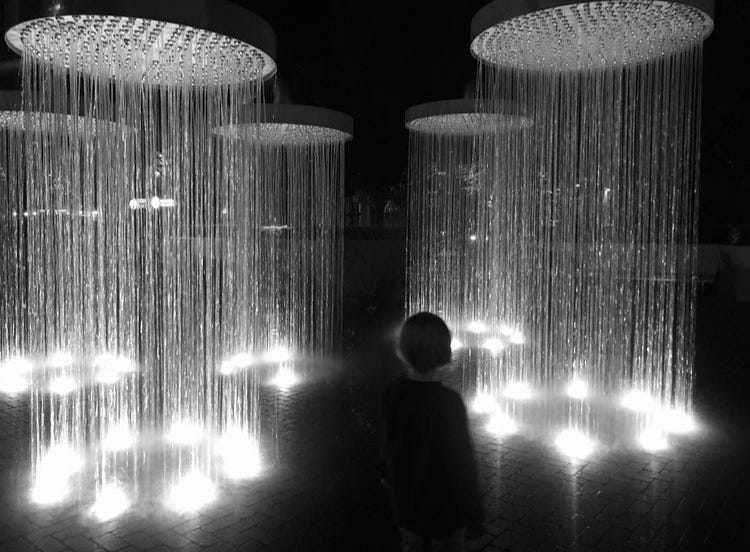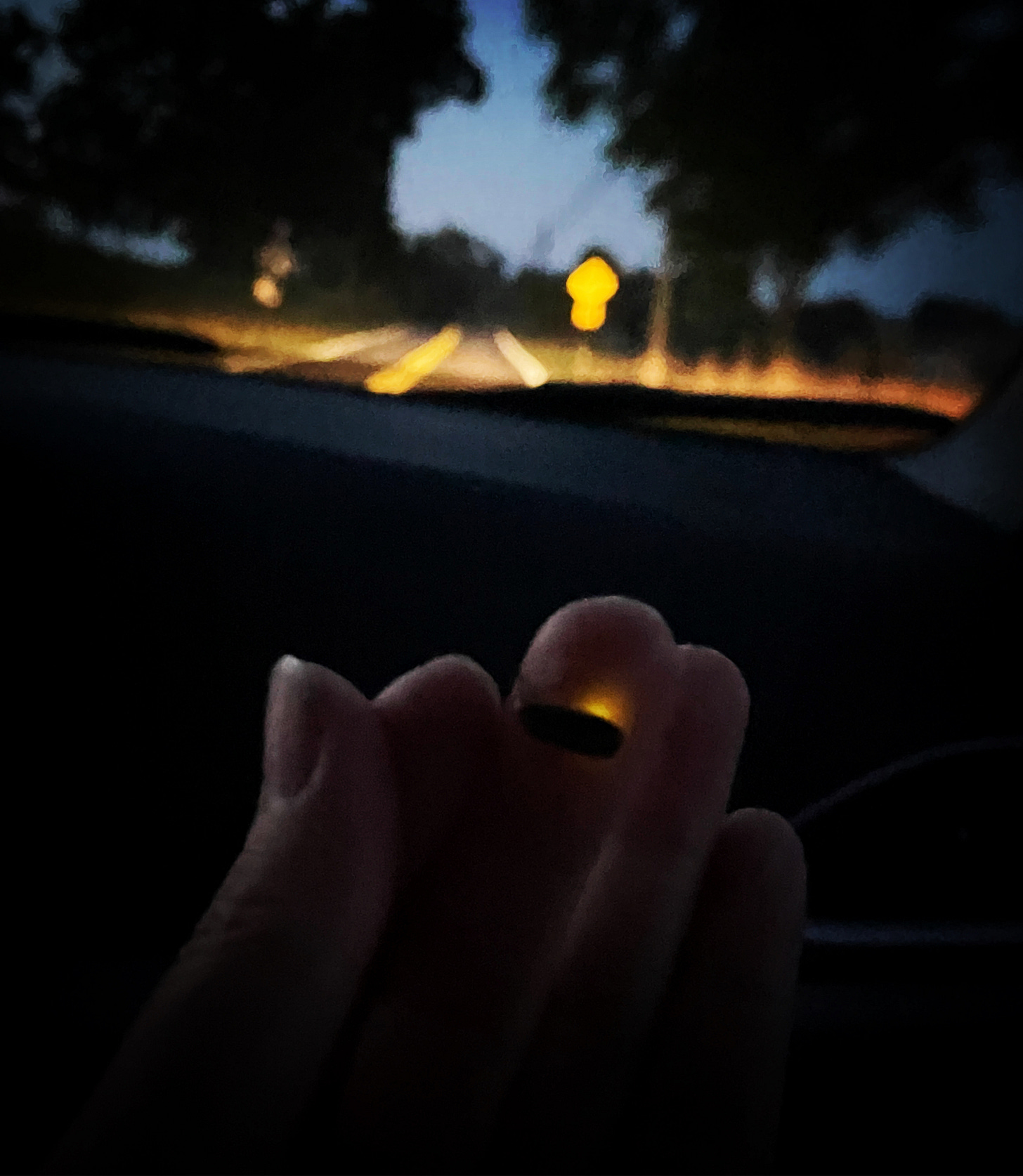Fear of the Dark
Welcome the birth of the new year calmer, stronger, ready to step into it without fear of what it brings us
If you are new or have landed on Tarantula: Authors and Art for the very first time, welcome. Our writer, Sanja Vladovic, a chocolate taster and activist will light up the path for you to face your fears before you enter the new year. If a friend forwarded you this article welcome; if you like it, share it or why not subscribe?
As the winter solstice approaches, preparations to face the darkness of the longest night of the year are well underway. The traditions surrounding the winter solstice are similar in many cultures and involve lighting a fire, burning the bonfires, lantern walks, Roman gifting candles, Christmas tree lighting, all in hope to drive away the darkness.
For this holiday period, I planned to write a text about family gatherings during the holidays, about Christmas decorations, dinners and encounters we have when we get together from different parts of the world, about all the wonderful and less wonderful conversations that occur when we gather around the table. But, then some sad news came to me, which made me think of the human relation with light and darkness in a bit of a different, less festive, way.
In the small village where my grandmother comes from and where my family regularly spends summers, a young boy died in his sleep. I didn't know him personally, but it's a small village and everyone knows each other, including our families, so I was struck by that news. The news was followed by the footage of the community's final farewell with a beloved member. Along the seashore, hundreds of signal hand flares were lit and illuminated the saddest night.
I’m from Dalmatia, a part of Croatia where people seems to be particularly devoted to express their emotions with signal hand flares. There is no occasion, private or public, there is no emotion that is not expressed with the spectacle of light of signal hand flares. From weddings, birthdays, christenings to final farewells, the lighting of the signal hand flares are an integral part of every ceremony.
One of the most spectacular pyro shows was prepared by Torcida, a famous supporters' group of the legendary football club HAJDUK from Split, celebrating Torcida’s 70th birthday two years ago. At midnight, hundreds of thousands signal hand flares were fired, representing the hearts of the Split’s residents beating for the club. I’m not really into football, but I was very moved by that picture. It was in the midst of the pandemic and the lockdown and I experienced it as an artistic performance. Looking at the sky full of red twinkling stars, shooting from every window of every house, building and apartment, I saw the human primal need for community, for union with other people, a need to send a signal in the night, not to chase away the beasts, but to let others know that we are not alone, that we are part of something bigger, that we belong.
The farewell pictures from my grandma village left the same strong impression on me. They expressed the primal instinct of the community when faced with death, the departure of its member, going into the darkness ... into the unknown. The only thing we can do when we face the ultimate unknown, the final darkness, is to send a ray of light into the night to illuminate the dark sky. The only thing we can do for our loved ones who are no longer with us is to send a ray of light into the darkness to light the way, so that they don’t walk alone.
Fear of death and darkness are the primal fears of the human race. While we were still hunters and gatherers, we were easy prey for predators, and during the night the danger was the greatest. Throughout our history, people have brought light into the night to face the darkness and ward off the monsters lurking in the dark, terrible beasts we assume are out there, even though we cannot see them. Fear of the dark is actually fear of the unknown.
Even if we are no longer easy prey for various predators from the wild, it seems that we are still afraid of the dark, night, and winter. As with most things, today's modern man goes to extremes; we have developed light technology to such an extreme that we hardly know true darkness anymore. Paris boasts to be the "city of light," and many other world metropoles are adorned with the epithet "the city that never sleeps." And in our homes, we spend so much time illuminated by the "blue light" of the screens that scientists warn us that we are facing an epidemic of "sleep disorders."
However, we forget that we need the night to see the stars, we need the winter to restore nature and prepare it for the spring. The dark is not hiding monsters only and winter is not the season without life. Deep below the frozen surface of the ground, a seed is slowly germinating in the dark, although hidden from our views, the life is growing.
Light and darkness are essential elements of life and it is not a surprise that they are the focus of many religions and philosophies. The relationship between light and darkness is particularly important in the Maya Cosmovision as well. The dichotomy of light and darkness symbolically defines the relationship of humans with the universe. Light and darkness are the opposites that complement and depend on each other. For the Maya, there can’t be light if isn’t confronted by darkness.
In Plato’s allegory of the cave, the shadows represent a collective illusion about reality and Plato talks about how we are chained up by our own preconceived beliefs, while for Carl Jung shadow is part of our personality that we choose to reject and repress in fear that society will not accept us because of it. For him “recognizing the dark aspects of the personality as real is the essential condition for any kind of self-knowledge.”
The themes of light and dark have occupied artists throughout history. Through depictions of nights, dreams and the nightmares, artists question the symbolism of darkness and light, order and chaos, salvation and damnation. Light is good, darkness is evil. Light is true, darkness and shadows are deception. By questioning the collective concept of darkness, artists often dive into their own shadow and face their inner demons. Illuminating them with the light of art, they seek salvation.
As we must accept the discomfort of the darkness of the night to enjoy the brightness of the stars, we must accept the discomfort of facing our own darkness, to shine in our wholeness. Fear holds us back, both as individuals and as a society. In the song "Paura di Buio" (Fear of the Dark) Italian rock band Måneskin sings about society's fear of the unknown, of the different, but also about the courage of those individuals who do not run away from their own shadow, their own freakiness, but accept it, with all the discomfort that such a choice brings, aware that this is the only way they can be who they really are. Whether we run away from the night or from our own shadows, we ignore the beauty of the night and beauty of our imperfect selves.
I have been working with cacao for few years now. Cacao is said to be a plant of darkness because thrives in the shadow of the higher trees. Flowers of cacao tree open at night, just before the dawn, and only then can the flower be pollinated. The ancient Maya used cacao in many ceremonies and believed that cacao connects them to their ancestors and has a power to safely guide us through our own shadow - Xibalba ("place of fright", underworld). Maya mythology and tradition is largely concerned with the balance of light and darkness, upper-world and underworld. The Maya believe that each of our traits can be a virtue or a flaw, our strength or our weakness, depending on how well we manage to establish a balance between our own light and shadow. For the Maya, the shadow is neither good nor bad, it simply is. The goal of each of us should be to accept our duality, establish a balance between our own contradictions and simply be ourselves.
So, we should not fear the dark of the long winter nights. We should welcome them. The long winter nights give us the time, space and stillness needed to turn to ourselves and look deep into our souls without fear of what we will meet there. Whether you are spiritual or skeptic, a cup of good hot cacao or any other favorite winter drink will help you take a brief break from the bright light of the modern world, turn to yourself, face your light and shadow. Listen to you heartbeats and breath whispers, and welcome the birth of the new year calmer, stronger, ready to step into it without fear of what it brings us.
“Night air has the strangest flavor, Space to breathe it, time to savor… Close my eyes to make the night fall, The comfort of the world revolving, I can hear the earth in orbit… in the night air”
- Jamie Woon, Night Air









